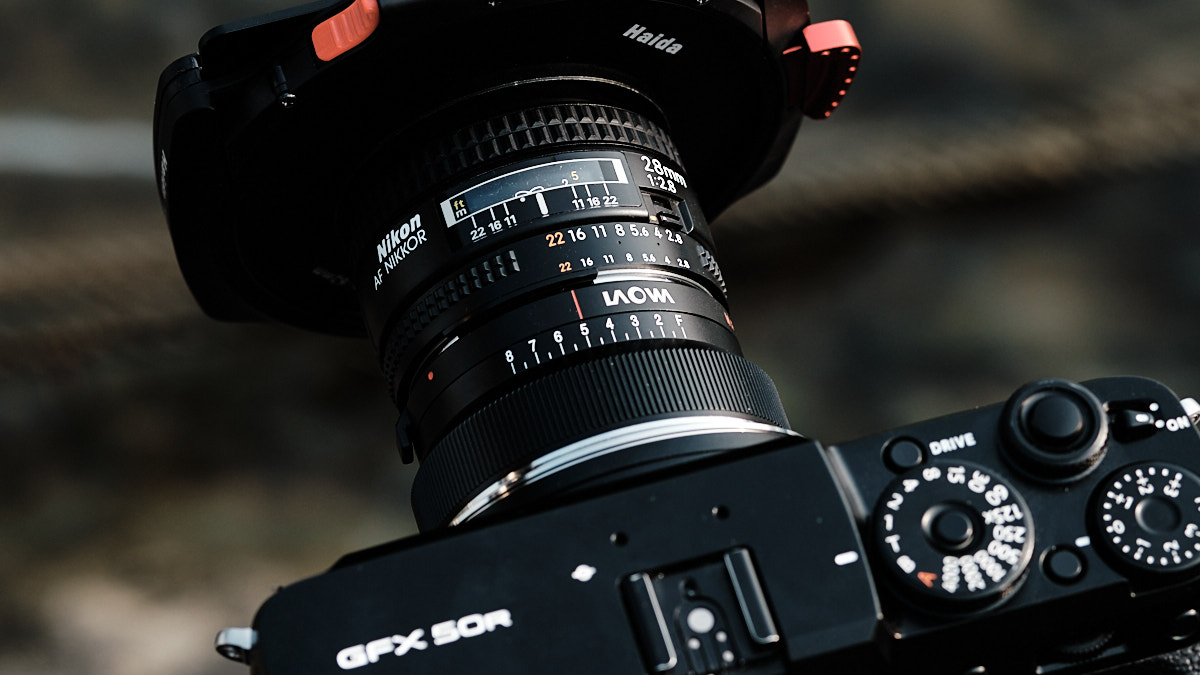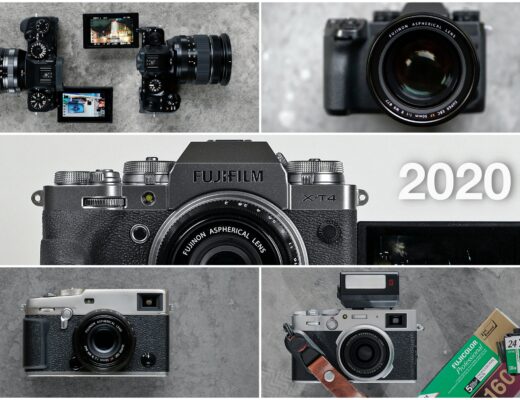There are several reasons you might want to adapt glass from another system to your Fujifilm GFX including unavailability of lenses in GF mount, a specific look, or extremely fast glass. With the GFX being a relatively new system, the lens lineup isn’t as fleshed out as some other systems. Nikon, on the other hand, have over 50 years of lenses available for their F mount and there are some absolute gems you might want to use with your GFX. Today, we’ll explore a few different ways to get that beautiful Nikkor glass mounted on your Fujifilm body.
We need to get over the physical hurdle of converting the mount first. All of the options below will do that. From there, however, we can look for additional functionality that might suit our purposes. One thing to remember when converting Nikkor lenses is that the F mount was used for several generations of lenses and also for two different sensor sizes. Nikon’s different aperture types and autofocus systems need to be considered in some cases, as does the fact that APS-C dedicated lenses are not likely to get close to covering the GFX sensor.
There are essentially four types of adapters out there for different purposes. Here, we’ll be looking at simple mount adapters, autofocus adapters, and focal expanders. The one type of adapter that I haven’t had enough experience with to confidently discuss is the tilt-shift variety. However, there are tilt-shift Nikkor lenses that can do this job.
Option 1: Mount Adapter
By far, the simplest and cheapest option for getting the widest variety Nikon F Mount lenses onto your GFX body is a simple mount adapter. These are made by several brands and each have their pros and cons when it comes to build quality. I tried several, but the one that I stuck with in the end was the Fotodiox Pro Nik(G) – GFX adapter. This adapter has a declicked aperture ring that allows the use of Nikon AI, D, and G type lenses with full aperture control.
Adapters like this one allow for all Nikon F Mount lenses to be attached and any that follow Nikon’s Aperture Indexing system can have their apertures controlled by the adapter. Although aperture control is not precise due to a lack of clicked stops, these adapters do allow us to set the aperture anywhere between wide open and fully stopped down. These are great if we plan to use AI lenses or D type lenses that do not benefit from the autofocus functionality of Option 2.
One thing to note is that these types of adapters do not have optical elements and so Nikon glass will behave as it does on a Nikon camera and may not cover the full sensor of the GFX. In my experience, most lenses of 35mm or longer have had a large enough image circle that the sensor was covered. However, there is increased vignetting and corners are not always sharp since the lenses were not designed with the extra sensor real estate in mind. That being said, we don’t expect them to perform perfectly.
Option 2: Autofocus Adapter
The availability of autofocus-capable adapters for Nikon lenses is limited to just one: the Steelsring Nikon F/GFX adapter. Nikon are one of the only manufacturers who have kept the same mount through the autofocus and digital revolutions. This included the use of screw-driven autofocus and more modern linear motors. Thus, there are certain limitations to which lenses can be autofocused on the GFX system.
Within the Nikon lineup, look for G or E in the nomenclature to ensure that a lens has an in-built focus motor. If it does, the Steelsring adapter can drive the autofocus. Unfortunately, since D type lenses don’t have a motor in the lens themselves, autofocus is not supported. That’s not to say AI lenses and D type lenses cannot be used with this adapter. Aperture can be set with the in-built aperture ring and manual focus is possible. The adapter will also still read metadata (lens name, maximum aperture) and write them to the file on your GFX provided the lens has CPU contacts.
So, how well does the autofocus work? In short, really well. I have noticed small variations between lenses, but that is to be expected based on the AF technology and amount of glass to be moved around. However, overall accuracy and speed are almost as good as Fujifilm’s native lenses. At this stage, only contrast-detect AF is supported, so you won’t get the extra boost that the GFX 100’s phase-detect system provides. Hopefully, this is something that can be worked out through firmware if Nikon’s lenses provide the required information. Time will tell.
One major benefit of this adapter is the ability to use the apertures of E type lenses. These do not use Nikon’s AI system and thus cannot be used except for their minimum aperture with most adapters. The Steelsring adapter allows electronic control of this aperture from the Fujifilm GFX bodies, making lenses like Nikon’s PC-E 19mm f/4 fully functional on the GFX bodies. The expanded image circle of this type of lens also makes it the perfect kind to adapt.
Option 3: Focal Expander
A focal expander is an adapter with a set of glass elements that enlarge the image circle of the attached lens. This gives us the opportunity to use lenses made for full frame cameras at much closer to their native field of view. Unfortunately, with physics being what they are, we do lose some light by expanding the image circle. However, we get to use the lens closer to how we would on a full-frame body without any additional vignetting or optical aberrations.
Both Metabones and Venus Optics (Laowa) offer a focal expander. The Metabones adapter offers a 1.26x magnification of the image circle whereas the Laowa offers a 1.4x magnification. Both of these will provide an image circle large enough to correct for the most significant vignetting produced by using Nikon lenses, with the Metabones offering a slightly wider angle of view than the Laowa.
Personally, I have only had experience with the Laowa offering (Magic Format Converter) and can only speak to that. Of the products listed here, this is by far the best constructed adapter (we’ll get into that in a full review next month) and the one that gives you closest to the results you’d expect from a full-frame lens. The GFX sensor is not the same shape as a 35mm full-frame sensor, so the exact angle of view is not too important unless you’re considering edge-to-edge image quality as an important factor in your decision. In this case, the Laowa magnifies to use more of the originally intended section of the image circle and should produce technically better corners.
A focal expander is a great option if we’re looking to use wide-angle lenses and get the most out of the GFX sensor real-estate. While we get a closer representation of the original angle of view and optical characteristics, we do lose a little light in the process, so this is worth considering – especially with long exposures!
In Conclusion
To wrap this up, I’d like to simplify the decision-making process for you. Need autofocus? Steelsring. Looking to use wide-angles lenses or closely replicate what you might get from using a Nikon camera? Focal expander. Just want to experiment with mounting various lenses on your GFX? Regular mount adapter. While these are simplified looks at the decision, they cover the major differences. Check back in next month for a detailed look at the Laowa Magic Format Converter.

























